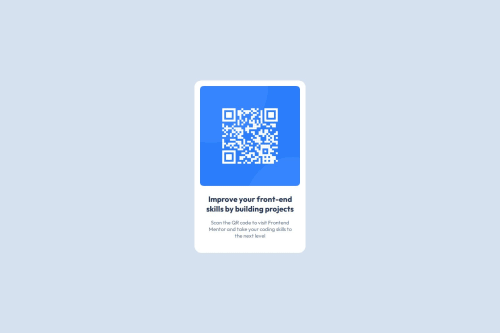
Solution retrospective
I was able to redo the challenge in a simpler way.
What challenges did you encounter, and how did you overcome them?I've learnt how to read the values in figma. It's easier when you have the figma file to do the challenge.
Please log in to post a comment
Log in with GitHubCommunity feedback
- @grace-snow
Hi
You need to
- use landmark elements - main for the card and footer for the attribution on this. This becomes more important on full webpages but it's good to get into the habit now
- you don't need to wrap img in a paragraph. Paragraphs are for text. It's usual to have a css reset at the start that would set all img tags to be display block and max-width 100%
- you are missing a heading in this. That's the one really important thing that's wrong in the html at the moment.
- you also need to remove all the brs in the heading and paragraph. Do not try to control line breaking like that - use max width on the card and let the lines break where they need to
Marked as helpful - @migsilva89
@Slideur good job!
favicon-32x32 is the image in title bar.
<header> <link rel="icon" type="image/png" sizes="32x32" href="./images/favicon-32x32.png"> </header>Hope it helps, if so please marked as useful :)
Keep going!
regards, Miguel Silva
Marked as helpful
Join our Discord community
Join thousands of Frontend Mentor community members taking the challenges, sharing resources, helping each other, and chatting about all things front-end!
Join our Discord